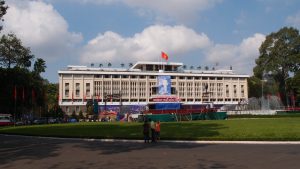The latest bombing in Kabul – of a school that left 68 dead and 165 wounded – serves as a dreadful reminder that wars are easier to start than they are to end. Most of the victims were schoolgirls, in a classic terrorist attack that was as bloody as it was senseless.
It was detonated as the withdrawal of military forces by the United States and its allies is gathering pace after marathon negotiations with the Taliban, the ultra-orthodox Muslims who provided a safe haven for Osama bin Laden and still want absolute rule over Afghanistan.
Veterans of the 1970s Indochinese wars are acutely aware of this. And there is a genuine sense of foreboding that Afghanistan will tread the same path as South Vietnam did after President Richard Nixon pulled U.S. troops out in 1973.
North Vietnam immediately and persistently violated the peace agreement and Saigon fell to the communists about 18 months later, prompting a flood of refugees and the subjugation of the South Vietnamese to totalitarian rule.
An Afghan Study Group, co-chaired by retired Gen. Joseph F. Dunford Jr., has warned that “a precipitous withdrawal could lead to a reconstitution of the terrorist threat” that led to the 2001 attacks on the U.S. and subsequent invasion of Afghanistan, within 18 months to three years.
But there are stark differences between the plight of South Vietnam and Afghanistan, which is not under any imminent threat from its neighbors who tend to meddle, particularly Pakistan.
American troop numbers in Afghanistan are about 3,500, plus contractors, along with a further 7,000 soldiers, mostly from NATO countries and Australia.
It’s a small number, but when combined with Afghan forces they have proven effective against the 3,000-strong Taliban that are considered full-time militiamen, and a further 7,000 part-timers.
In comparison, Nixon pulled 69,000 American troops out of South Vietnam knowing full well the North Vietnamese had more than 150,000 soldiers in place south of the border plus the local communist militias known as the Viet Cong.
Ever since Saigon fell to the communists in 1975 and South Vietnam was formally annexed a year later, there have been no shortage of writers, historians, and left-wing politicians all too willing to rub salt into the wounds by declaring Vietnam a “crushing defeat” for U.S. forces.
The truth is Americans wanted out of the unpopular Indochinese wars for political reasons back home. They abandoned their allies and that resulted in a crushing defeat for South Vietnam, and Cambodia and Laos, at the hands of communist forces.
Their dependency on the U.S. was simply too great when Saigon, Phnom Penh, and Vientiane could ill-afford to go it alone and maintain their defenses against an advancing enemy.
This was eloquently summed up by Don Nicholas, a former marine who fought in Vietnam and Afghanistan and left both wars “unwon” and local allies on the battleground, where the prospect of retribution from an incoming enemy was and is very real.
“The same thing that happened in Vietnam is happening here,” Nicholas, told the Wall Street Journal. “They’ll say we accomplished great things… I say we accomplished nothing.”
Whether that happens in Afghanistan remains to be seen. The Taliban have never controlled all of that country but there is an old Afghan maxim, “He who controls Kabul controls Afghanistan,” and the capital will be their target once the withdrawal is complete.
There has been speculation that a small force will remain, capable of aiding and directing operations if and as required, backed up by aerial support, including drones.
It’s a decision that rests with U.S. president Joe Biden.
The latest bombing – targeting Shiite and Hazara minorities – has been blamed on the Taliban, a charge they deny. But it still serves as a reminder that the Afghan wars are far from over, 20 years after the first U.S. troops landed. They need to remain.
Luke Hunt is the author of the Vietnam War book, Punji Trap. He also served as Kabul bureau chief for Agence France-Presse in 1998-99 and has returned several times to cover the conflict. He can be followed on Twitter @lukeanthonyhunt.

































